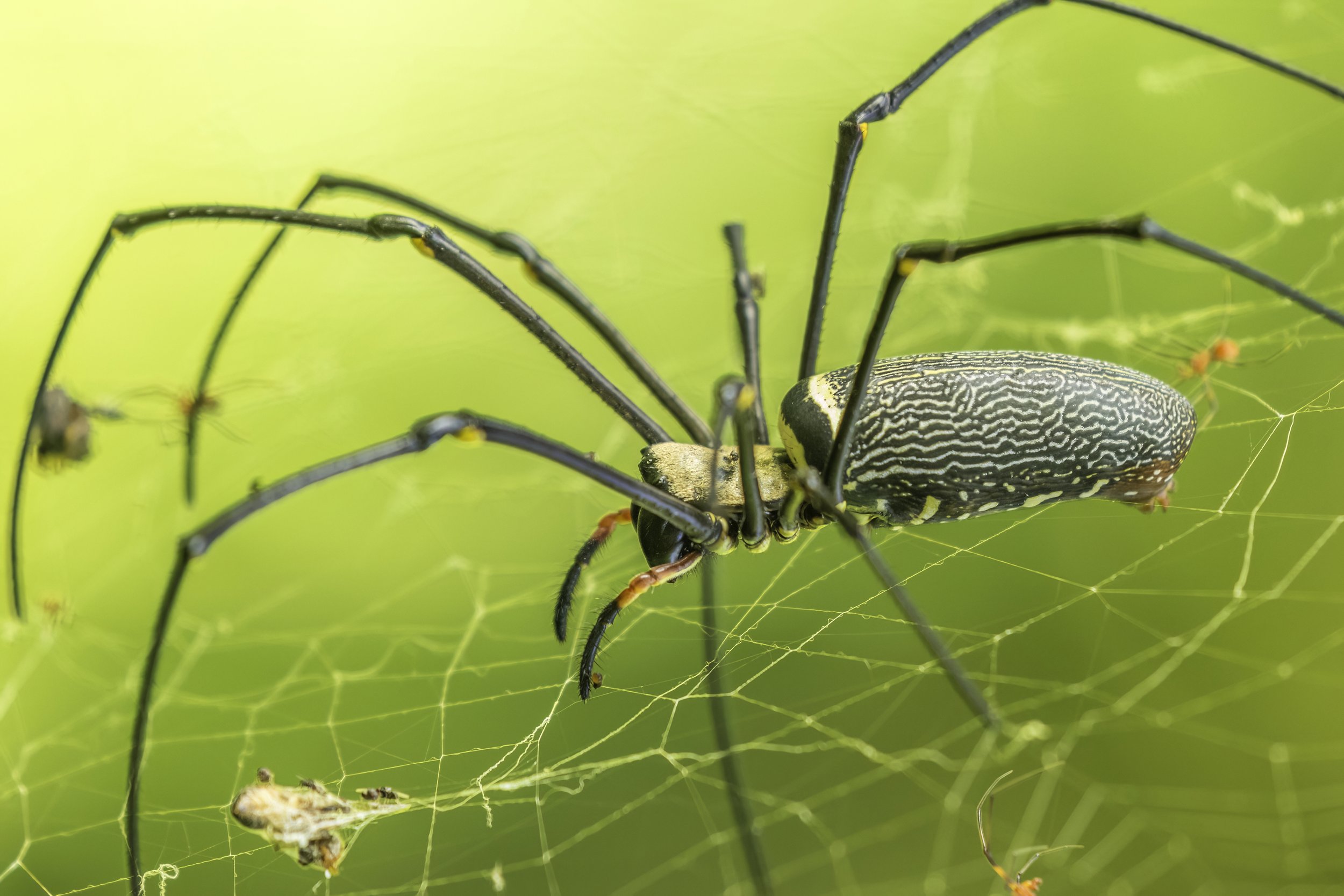Indian Bark Mantis
Humbertiella ceylonica
Kawal Tiger Reserve, Telangana
While we were in the midst of the India-Pakistan conflict I had the opportunity, as part of my ongoing collaboration with the Hyderabad Tiger Conservation Society to explore some areas of the Kawal Tiger Reserve including some Gond villages within the area. I did some nightscapes in the vicinity of one of those villages published last week. Today’s blog is the first of many wildlife blogs from Kawal and is specifically about a unique and not often documented inhabitant of these jungles.
Telangana is the eleventh largest state in India situated on the south-central stretch of the Indian peninsula on the high Deccan Plateau. It is the twelfth-most populated state in India with a geographical area of 112,077 km² of which 21,214 km² is forest cover. The dry deciduous forests ecoregion of the central Deccan Plateau covers much of the state, including Hyderabad. The characteristic vegetation is woodlands of Hardwickia binata (Anjan Tree or నరేపా) and Albizia amara (నార్లింగ నల్ల రెంగా). Over 80% of the original forest cover has been cleared for agriculture, timber harvesting, or cattle grazing, but large blocks of forest can be found in the reserve areas like Kawal, Amrabad and the huge Nagarjuna Sagar - Srisailam Tiger Reserve. The more humid Eastern Highlands moist deciduous forests cover the Eastern Ghats in the eastern part of the state. The Central Deccan forests have an upper canopy at 15–25 meters, and an understory at 10–15 meters, with little undergrowth.
Our blog today is from the Kawal Tiger Reserve located in the North Eastern part of Telangana (the old Adilabad district) bounded by the mighty Godavari River on one side and the Maharashtra border on the other. It lies within the Jannaram mandal of Adilabad district. The Government of India declared Kawal Wildlife Sanctuary a Tiger Reserve in 2012 and HyTiCoS was a key influencer in this decision. At present the reserve has a low tiger density but promises tremendous potential as a source area with stepped up protection and habitat amelioration under Project Tiger. The Kawal Wildlife Sanctuary was established in 1965 and later declared as a Protected Area (PA) in 1999 under the WPA, 1972. Incidentally, when I went through my photographs over the years, I realized that a lot of the wild and birdlife I had photographed were from the areas in the Godavari River basin and its tributaries. Read about them here.
Kawal is well known for its abundant flora and fauna. The reserve is catchment for the rivers Godavari and Kadam, which flow towards the south of the sanctuary. The Kawal Tiger Reserve (KTR) is spread over a total area of 2015.44 km² of which the Core Area is 893 km² extending in the districts of Nirmal, Mancherial, Adilabad and Kumuram Bheem Asifabad. Geographically the reserve is situated in the southern-most tip of the Central Indian Tiger Landscape, having linkages with the Tadoba-Andhari (Maharashtra) and Indravati (Chhattisgarh) Tiger Reserve. Thus, the habitat has tremendous significance for tiger conservation in the region. It is also a major catchment of river Godavari and local rivulets like Peddavagu and Kadam. It is a typical central Indian Tiger Landscape having southern Tropical Dry Deciduous Forest. After being listed as a Tiger Reserve in April 2012, it was developed as a tiger habitat with the release of 150 Chital as the prey population and today it is home to Nilgai, Sambhar, Chausingha, Wild Boar, Wild Dogs, Gaur, Foxes, Wolves, Bats, Sloth Bear, Leopards and passing Tigers.
The bird life too is abundant with numerous Peacocks, Bulbuls, Partridges, Quails, Flycatchers, Thrushes, Hawk-Cuckoos, Eagles, Vultures to name a few of the 242 bird species reported here. Read about some of them below. To reduce poaching, new check-posts have been created and traditional sources of water improved. HyTiCoS is also leading from the front conducting regular threat assessments and snare removal surveys, monitoring the Tigers which are in and passing through, conducting large-scale occupancy surveys and monitoring the prey base. They map corridors, conduct Bird Walks and Biodiversity Documentation Checklists and much more.
The Jannaram Haritha Hotel is one of the best places to stay for those visiting the Kawal Tiger Reserve. It is located approximately 295 kms from the Rajiv Gandhi Hyderabad International Airport. The location of this hotel close to dense vegetation and in proximity to the famous Kadam & Pochera Waterfalls. There are spacious rooms with good water supply and a good restaurant operated by the tourism department. The Telangana State Tourism Development Corporation (TSTDC) offers luxurious, comfortable and world-class accommodations with its Haritha chain of hotels and resorts all over the state and invariably I have noticed these have the best locations across the state offering spectacular views and unique experiences. These resorts are well maintained and reliable with many amenities.
Today is about one unique insect of these jungles - the Indian Bark Mantis.
Kawal Tiger Reserve
Beedi leaf tree (తునికి)
Biogeographically Kawal falls under the Deccan Plateau Zone (Zone VI). The forest vegetation of the core has been classified as “Southern Tropical Dry Deciduous Forest: Dry Teak Series and Southern Dry Mixed Deciduous Forests Series” (Champion and Seth, 1968). Teak is found extensively along with Bamboo. As many as 673 plant species have been recorded, and the important ones are Anogeissus latifolia commonly known as the Dhawa, Mitragyna parviflora commonly known as the Nerkadamb, Terminalia crenulata commonly known as the Crocodile Bark tree, Terminalia arjuna or the Arjun Tree, Boswellia serrata or Dhup tree, Sterculia urens commonly known as the Bhutyā (Ghost) tree, Terminalia belerica commonly called the Baheda, Madhuca indica or Mahua a favourite of bears, Cleistanthus collinus or Garra/ Toxic Gooseberry, Lannia coromondilica known as Moya/ Indian Ash Tree, Butea monosperma the stunning Palash/ Flame of the Forest, Calycopteris floribunda known as Kokkarai in Hindi and Bandi murugudu (బండి మురుగుడు) in Telugu, Zizyphus oenophile the Indian Plum or Makai, Acacia intisia known as Incha, Palinja or Soap Bark and the Diospyros melanoxylon or the Beedi leaf tree (తునికి) shown here on the right.
The important grass species include: Heteropogon contortus known as Oopu gaddi or Eragaddi (ఎర్రగడ్డి), the weed Apluda mutica known as Lapdu (లాప్డు) in Telugu, Saccharum spontaneum known as Rellugaddi (రెల్లుగడ్డి) or Kaki Cheruku (కాకి చెరకు), Oplismenus composites called Kodijuttugaddi (కోడిజుట్టుగడ్డి), Dicanthium annulatum known colloquially as Angadi Gaddi (అంగడి గడ్డి), which translates to "ringed grass" or "marvel grass". Another common name in Telugu is chinnagaddi (చిన్న గడ్డి) and Themeda species known as Chikati Gaddi (చీకటి గడ్డి) or "Aavu Gaddi" (ఆవు గడ్డి). The reserve has considerable weed growth of Cassia tora, Hytis suovalens, Cleome viscosa and Lantana camara.
Kawal has faunal diversity typical of the Deccan Plateau. Zoo-geographically, the reserve comes under the Indo-Malayan region, and the major wild animals include: Nilgai, Chausingha, Chinkara, Black Buck, Sambhar, Chital, Wild Dog, Wolves, Jackals, Foxes, Jungle Cats, Leopards & the umbrella species - Tiger. Besides these big ticket species there are 23 orders of insects, 10 species of amphibians belonging to three families, viz. Bufonidae, Ranidae and Rhacophoridae; 34 species of reptiles out of which 14 belong to order Testudines, 13 to order Sauria and 7 to order Serpentes. As many as 260 species of avifauna belonging to 18 Genera, 51 families and 75 species of Mammals belonging to the orders of Insectivore (2), Chiroptera (25), Primates (4), Carnivora (17), Artiodactyla (10), Rodentia (15), Lagomorpha (2) are found.

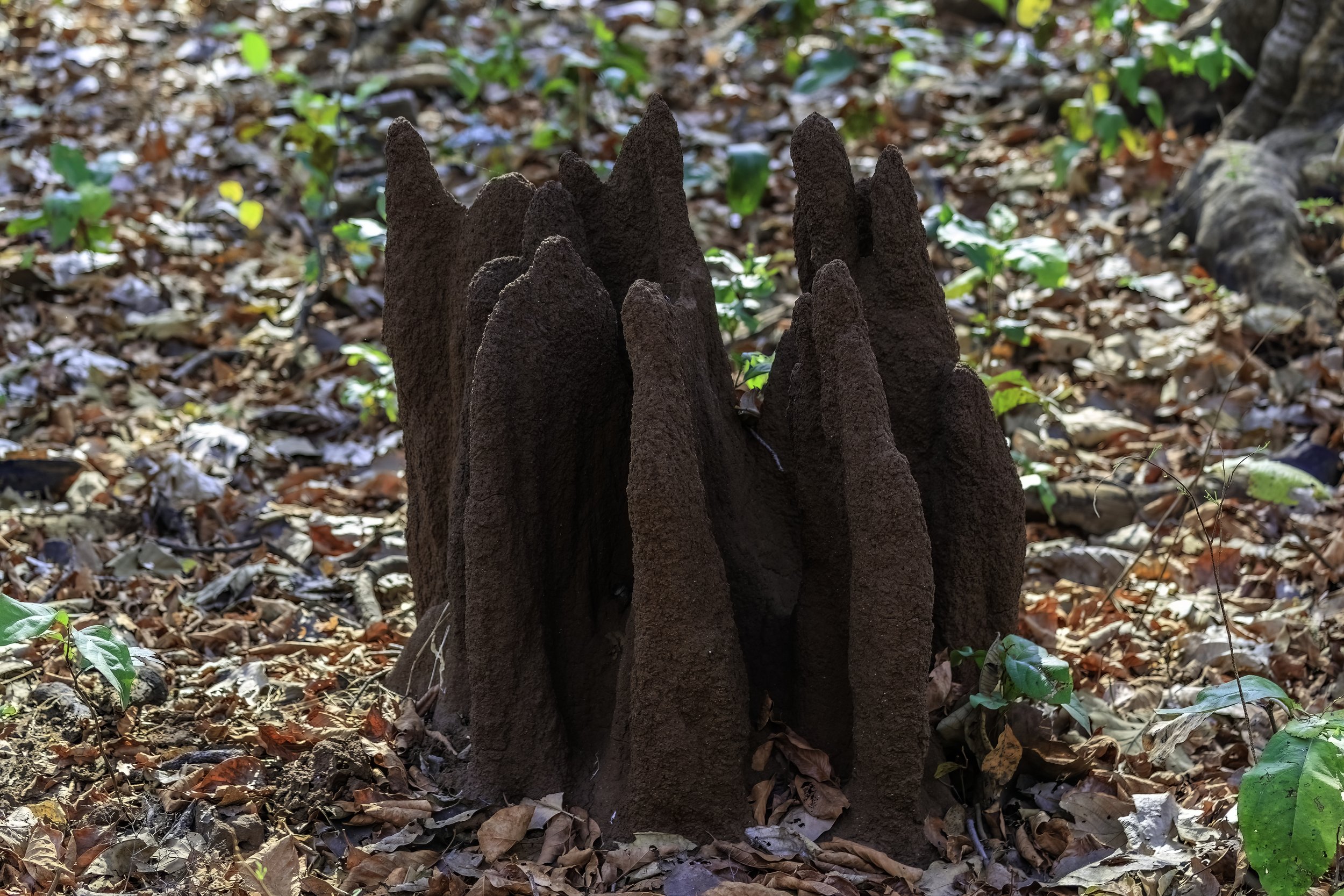


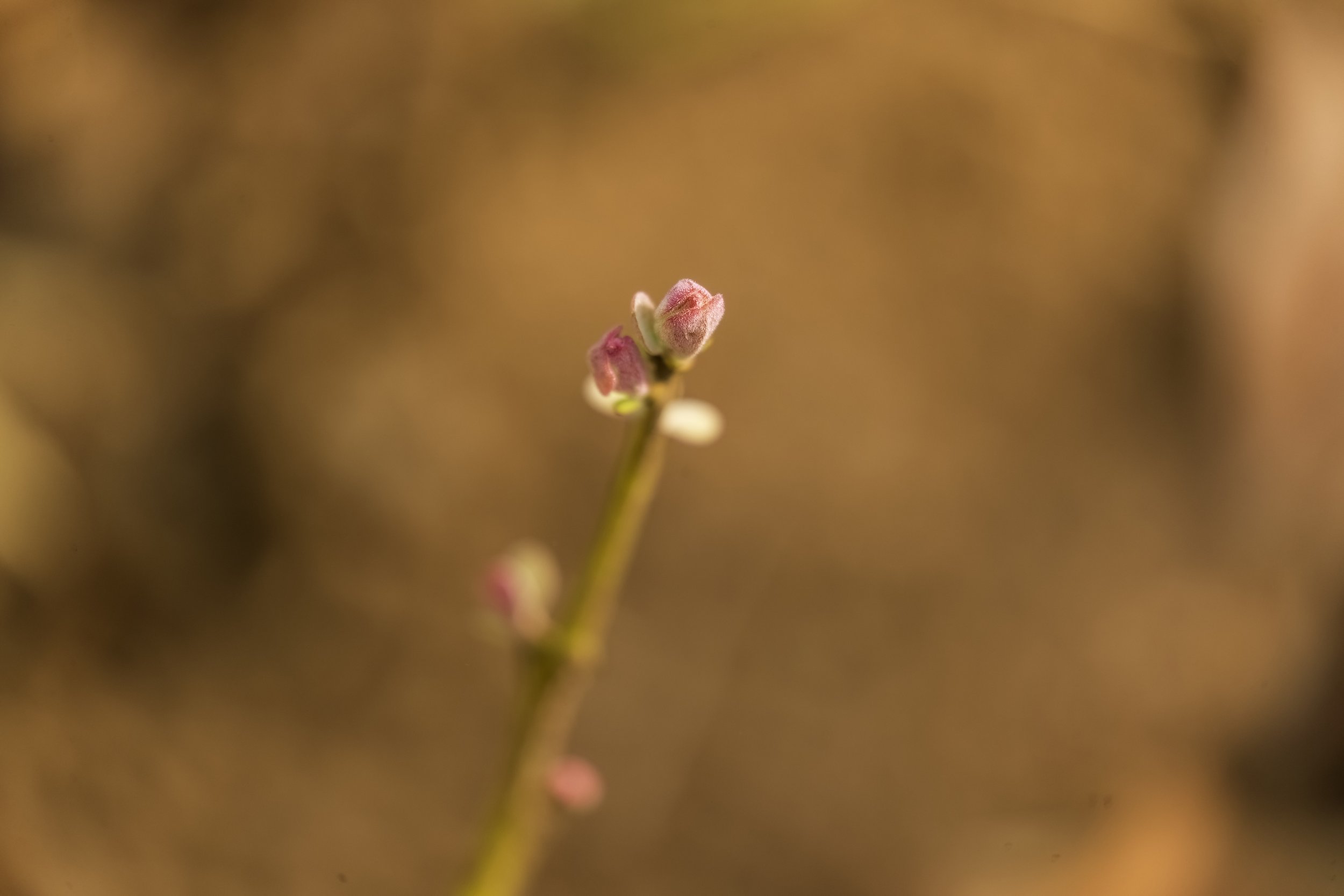
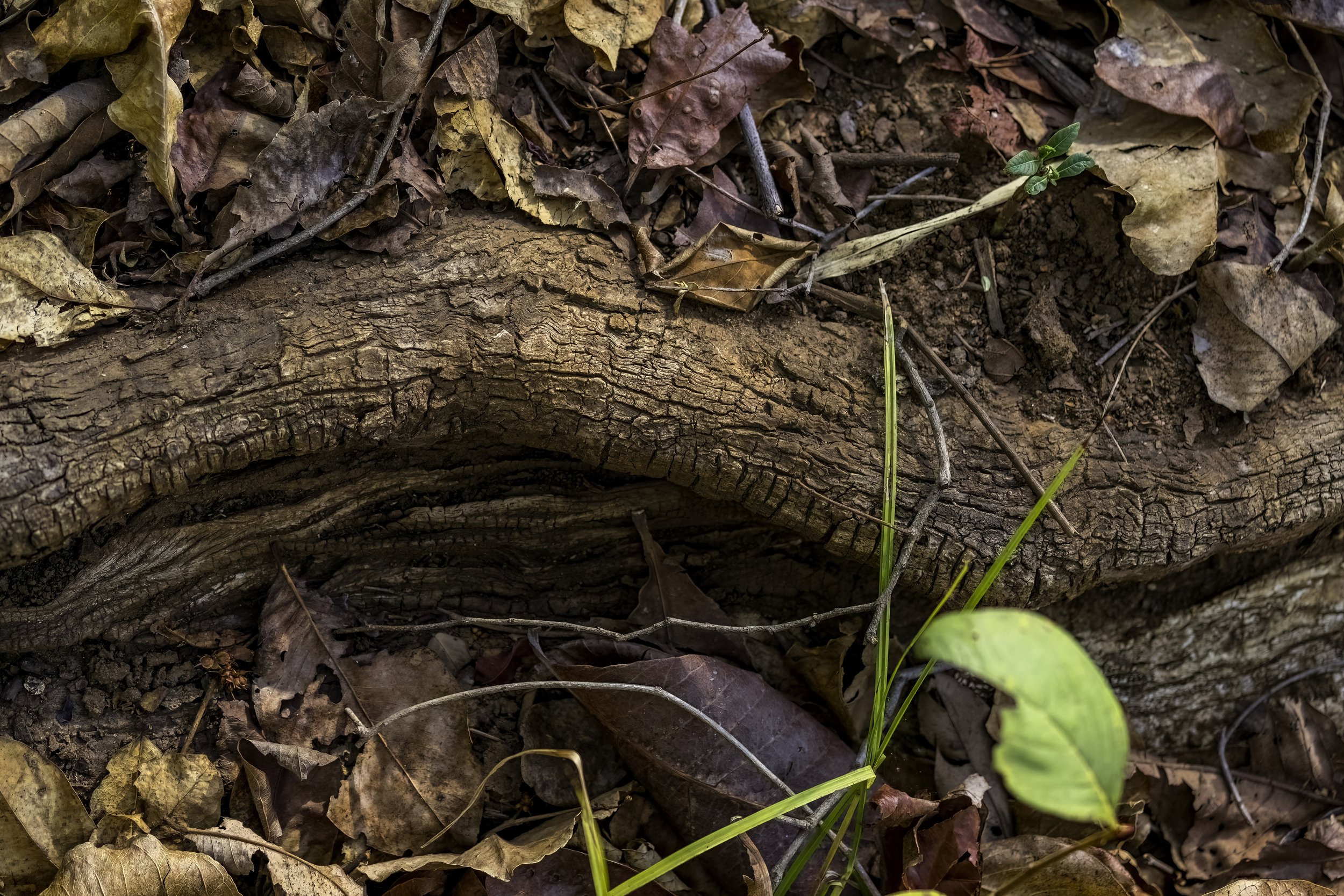
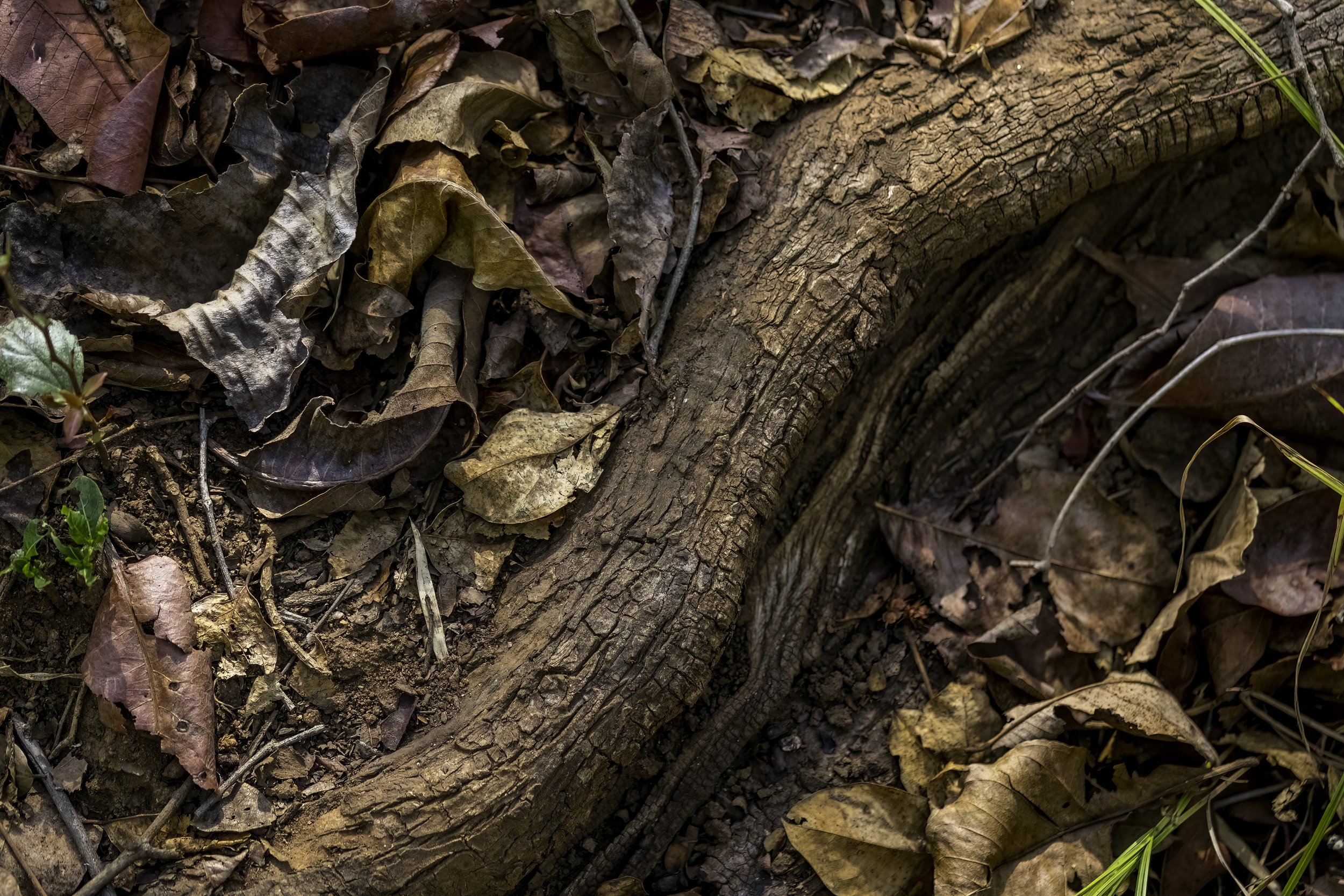
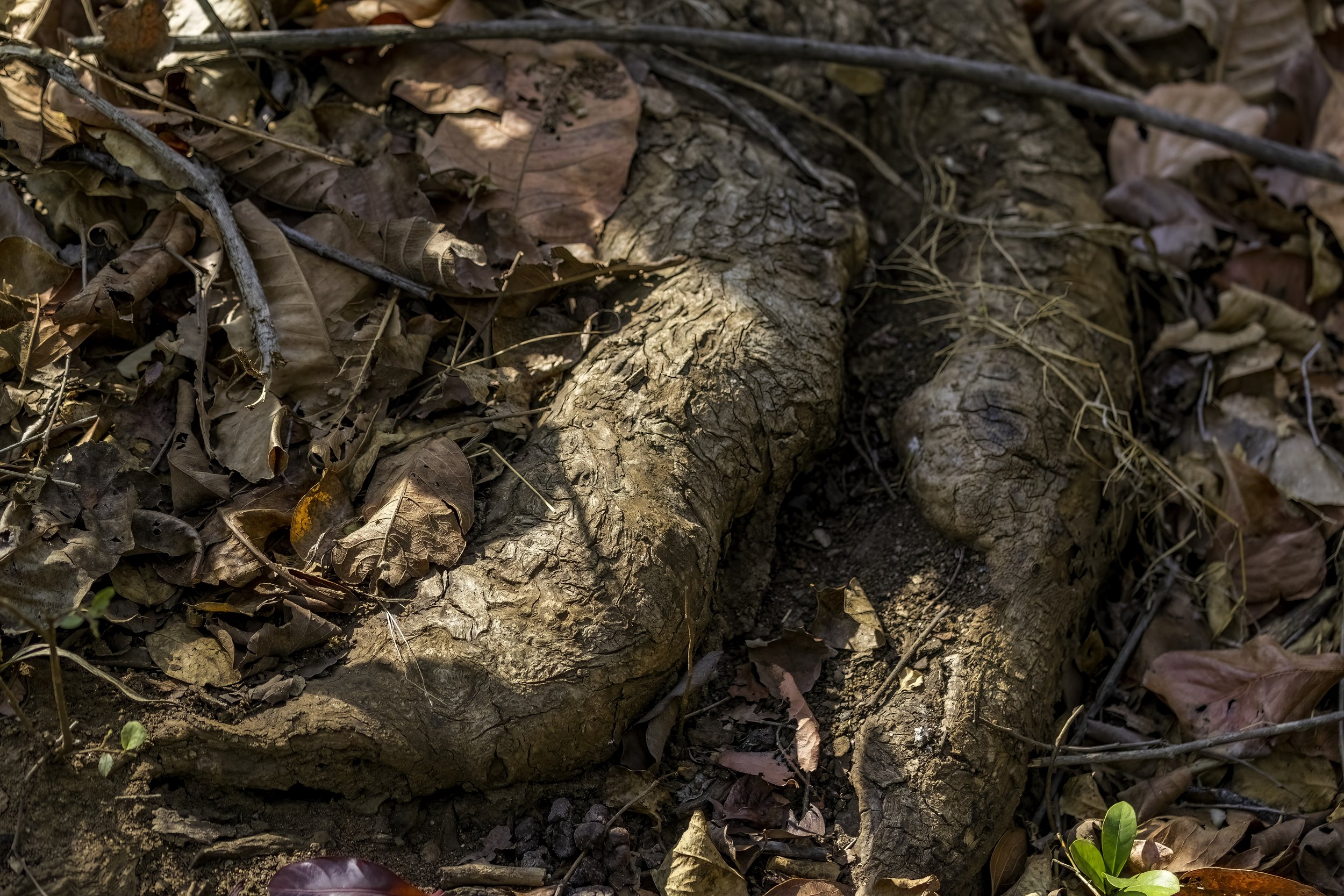
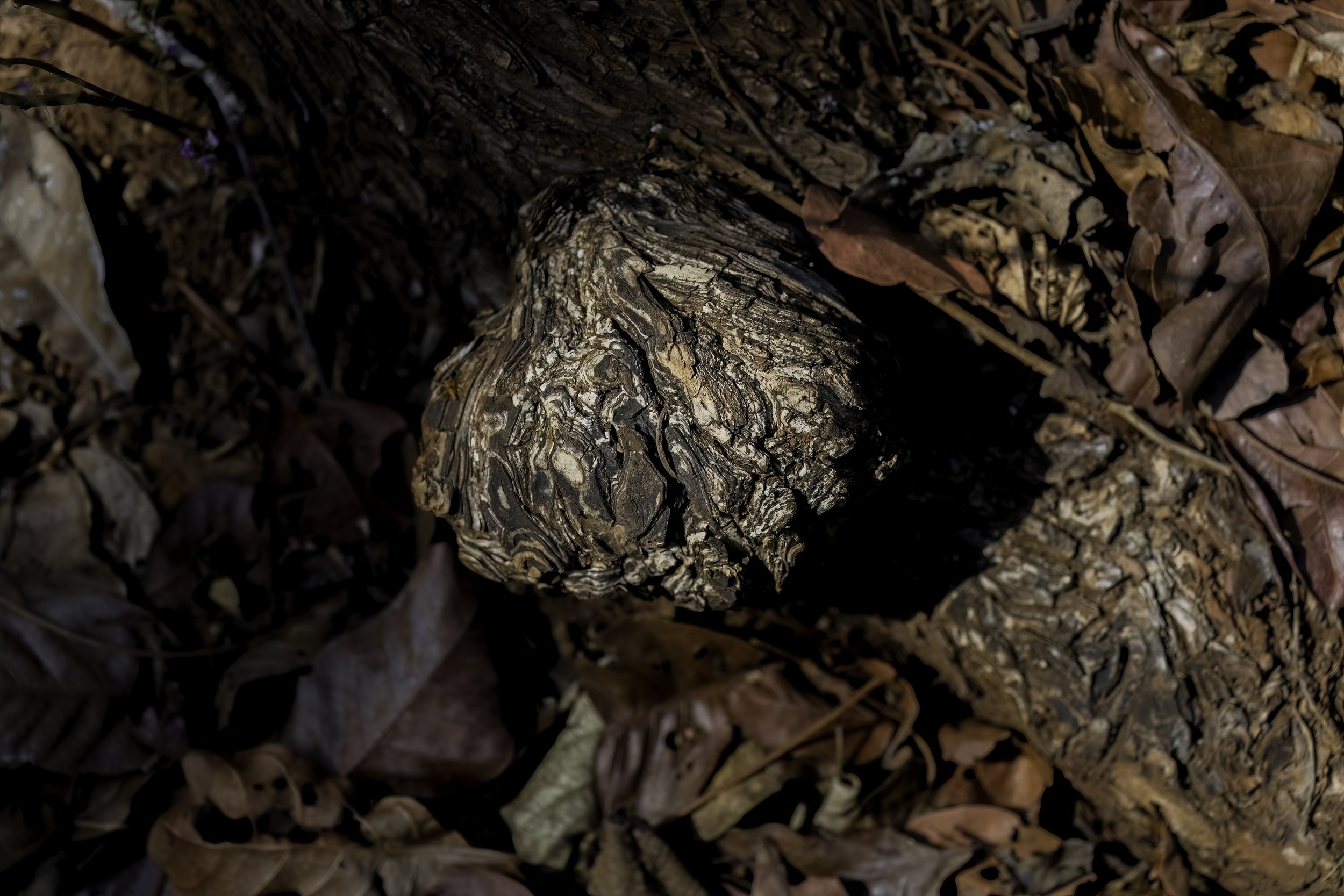
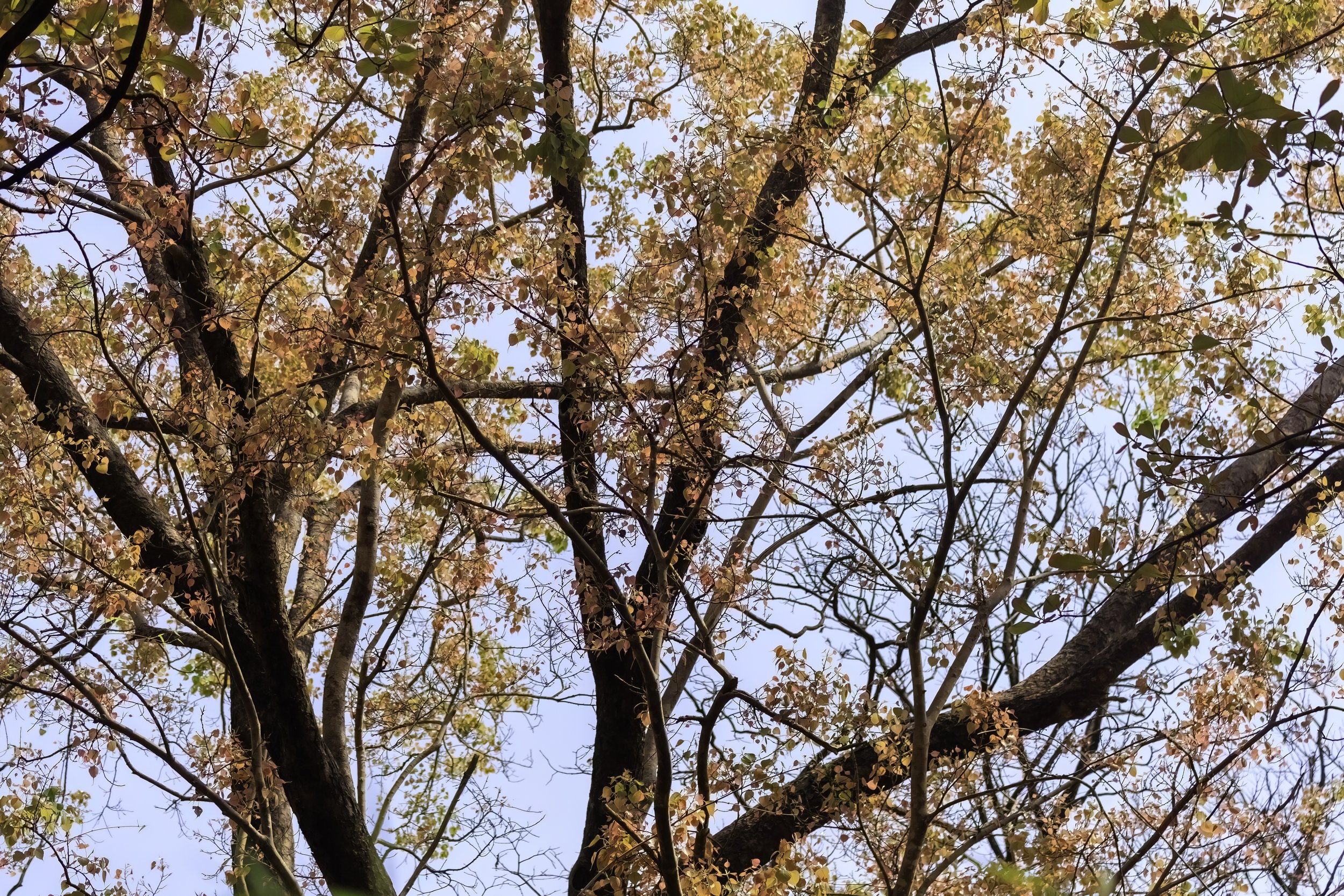
Tiger Status
Compared to the older Tiger Reserves like Corbett or even Nagarjuna Sagar - Srisailam, Kawal is a more recent notification as a tiger reserve, with tremendous scope for consolidating the core area vis-à-vis the guidelines of Project Tiger. The important managerial thrust areas include stepped up protection through reinforced protection infrastructure in the form of patrolling camps, wireless network, foot patrolling and vehicular patrols. Further, the core area needs to be made inviolate through voluntary relocation of human settlements to foster a viable population of tiger. The buffer has a multiple use agenda to address co-occurrence of wild animals and people. The livelihood options to people are important through ecologically sustainable viable options through sectoral integration. The wildlife concerns need to be mainstreamed in forestry operations.
The Kawal Tiger Reserve has connectivity to the Tadoba-Andhari Tiger Reserve of Maharashtra in the North, to the Indravati tiger reserve of Chhattisgarh towards its North-Eastern side and the Tipeshwar Wildlife Sanctuary to the North-West. Portions of the Bellampalli territorial division (Kukkudhatti-Ada area) borders Maharashtra. Likewise, the forests of Bijjur and Kagaznagar have connectivity towards the Chapparala Wildlife Sanctuary of Maharashtra leading to Indravati Tiger Reserve (Chhattisgarh).
Read about some of the magnificent Tigers from Central and South India.
Threats
Sand mining, poaching, destruction of teak forests, migratory cattle, vehicular disturbance, lack of water and fodder were and still are major threats in the reserve. The lack of sand in nearby villages and towns led to the main problem of sand mining within the forest range. But with help from political leaders, the unrelenting endeavors of the staff from the Forest Department and HyTiCoS and the continued support of the villagers the situation has been controlled to some extent, however it is a constant threat. The presence of teak and bamboo too is a primary threat leading to habitat destruction due to felling and smuggling. These threats have been controlled by the establishment of base camps in the interior forest areas and deploying strike forces and anti-poaching squads. All vehicular traffic is restricted between 2100 hrs and 0600 hrs on the roads passing through the tiger reserve and heavy vehicular traffic of certain categories is prohibited at all times on these roads.
Fire is another managerial issue as the entire area is fire prone and burns almost twice in the hot season. Attempts have been made to enhance the habitat by improving the status of water availability in the reserve through increasing the number of percolation tanks, check dams, by repairing old structures, and repairing the major breached tanks, maintenance of saucers and natural water holes. Though the rain fall varies between 900 mm to 1100 mm, almost the entire water from the rains drains into the River Godavari within hours due to the slope of the land. 55%-60% of area is occupied by Cassia tora (Chakunda), Hyptis suovalens (Chia) and Lantana camara (Lantana). Attempts have made to reduce the dominance to expose the ground and to improve the status of grasses/ fodder in the reserve. There are 10-12 villages inside the core area and attempts are being made to relocate them to areas adjoining the forest - a herculean task by any measure. Once the villages are relocated the issues of meadows and the fodder problem may be solved in addition to making the area inviolate.
Praying Mantis
Praying Mantises are curiously beautiful creatures. They stand on four stick-like legs with two enlarged legs held up in front of them, appearing as though the insect is praying indicating the inspiration for their name. Two large compound eyes and three small, simple eyes sit on a triangular head that seems to have been the concept of most extra-terrestrial life we see in the media. All six legs and the alien-like head are attached to a lithe, sinewy body (thorax and abdomen). Many mantises even have a pair of wings, clearly distinguishable in the photo above, that enable flight in some species. Millions of years of evolution have crafted these athletic predators into a baffling variety of sizes, shapes, colours and patterns. Their remarkable forms are aesthetically stunning and functionally sound, providing the mantis with camouflage to hide from predators and sneak up on prey as you can see in the photo below. It is visible in the photo rather clearly given my proximity and angle but as you move a feet or two away from the tree it blends into the bark and almost completely disappears from sight.
There are about 2,400 species of praying mantis in the world of which around 169 are found in India (based on recent checklist). Generally they prefer warm, temperate and tropical habitats and are usually clad in leaf greens or bark browns as you can see in my photo gallery. Some are dead ringers for orchids and flowers, so foolish bees and flies fly straight into those terrible barbed arms in the hope of getting nectar and pollen. They’re related to termites and cockroaches and their earliest fossils date between 146 and 166 million years back. Between half an inch and 12 inches long, they are ferocious predators. The 169 species of praying mantises found in India do well to demonstrate the remarkable diversity in their appearances. There are tiny mantises that look like ants and large ones that look like leaves. Some look uncannily similar to the tree bark they sit on, and some even look like moss growing on a branch. In India, some unfathomable forms, like the moss-mimicking Ceratomantis ghatei, are only found in the rich forests of the Western Ghats. Some equally incredible-looking mantises, like the bark mantis and flower mantis, can be found in the middle of bustling cities. The thing I particularly like about this insect group is how they instantly spark curiosity in anyone who sees them. Despite their unfamiliar shape, to those uninitiated in invertebrates, I have seen people mostly gasp in wonder at the sight of a mantis gracefully moving and looking right back at them.
Praying Mantises belong to the order Mantodea. They are referred to as “Praying” Mantis for the design of their forelimbs – or the appendages – called raptorial legs, held in a shape as if “praying with folded hands”. These praying limbs aren’t really praying, but preying! These raptorial legs are designed to act like pincers, scissors, crushers and fingers! Mantids (as they are generally called) also have highly developed compound eyes with a wide binocular vision. The head is triangular which can rotate to about 300 degrees in some species and they also have elongated thorax that aids in free movement of the raptorial limbs. The enlarged forelegs have deadly spikes on them that are well suited to catching and gripping prey. It hunts by stealth, staying motionless until its prey comes within reach. Once the prey is snared in its legs, the mantis uses its powerful mouth to bite, tear and consume its prey. While insects are, for the most part, a significant part of the mantis’s diet, anything that it can catch, it will. Mantises have been known to catch, kill and devour spiders, lizards, frogs, small snakes, and even small birds like sunbirds or hummingbirds.
Besides this built-to-kill morphology, they are also excellently camouflaged being able to mimic a stick, a leaf, a flower, stones, ants (especially newly hatched nymphs) and even a fire ravaged landscape! The mimicry is of prime importance in the Mantid world, for they are ambush hunters. They prefer keeping dead still – and being well camouflaged – they go unnoticed by an unsuspecting prey – which, when close – is captured with blinding speed. Some Mantids such as Bark Mantis and Ground Mantis however, often prefer stalking prey. Praying mantises have two large forward-facing compound eyes (composed of individual units called ommatidia) set on either side of their heads. The easy-to-spot compound eyes also possess a pseudopupil, a dark spot that appears inside the compound eye cluster. This dark spot looks deceptively like the pupil of a simple eye (like the one found in humans). The dark spot creates the illusion of a pupil following the observer. In addition to their two compound eyes, mantises possess three small and inconspicuous simple eyes set in the middle of their heads behind the antennae. The huge stereoscopic eyes have a specialised area called the fovea which enables it to closely focus on and track movement from as many as 60 feet away and can leap with speed and precision. It is also able to rotate its head 180° and look at you over its shoulder. Its movements are lightning fast, twice as fast as a housefly’s. Apart from insects, frogs and lizards, it may even go for small birds. In a study titled “A Novel Form of Stereo Vision in the Praying Mantis”, the team found that praying mantises can see in 3-D. The study found the mantises were better at gauging distance in some scenarios than humans! Excellent vision that allows the mantis to detect both prey and potential predators.
Mantises also have two antennae atop their heads. The length and girth of the antennae vary depending on the mantis species. Some antennae contribute to the overall camouflage, like in the Indian Horned Mantis. Irrespective of their design, mantis antennae are nifty sensory organs that detect vibrations and chemical changes and allow some species to communicate with each other. At the base of the mantis’s head are its mouthparts — mandibles, maxillae and labium. Mandibles are powerful jaws that allow mantis to bite and tear through prey. The maxillary palps and labial palps are the finger-like structures in front of the jaws that dexterously move objects in and out of the mandibles (jaws). In addition to using their mouthparts to chomp through prey, mantises also use them for personal hygiene by regularly grooming themselves. Grooming helps the mantis remove debris or food leftovers that may otherwise invite infectious parasites.
Praying mantises are known for their sexual cannibalism — where the female bites the male’s head off. Contrary to popular belief, sexual cannibalism by the female is prevalent only in some species of praying mantis. In the species that do demonstrate cannibalism, studies have found that only 13-28 per cent of sexual encounters end with the female cannibalising the male. Once the male successfully mates with and fertilizes the female’s eggs, the female mantis builds a silky cradle (ootheca) for her eggs (typically about 100 at a time). When the young ones hatch from their eggs, they pour out of the ootheca in overwhelming numbers. Interestingly the cannibalistic behaviour is seemingly more prevalent in captive mantises rather than wild mantises.
The lives of praying mantises often revolve around camouflage designed to near perfection. Mantids not only camouflage and remain still; they also mimic the movements of leaves or branches swinging in air. They rock and roll as per the leaves – to match that exact shape and action. This has given them a heightened chance of finding prey. Blending in with their surroundings allows mantises to sneak up on prey and hide from predators. For instance, the bark mantis has evolved to blend seamlessly tree bark patterns. The violin mantis (Gongylus gongylodes) barely looks like a living creature and is more like a twig with leaves that have suddenly come to life. With the Ceratomantis ghatei fact is stranger than fiction, as it looks like moss growing on vegetation, perfect for the wet, mossy forests of the Western Ghat forests where it is found. Some praying mantises seem to have found that blending into an environment can sometimes mean looking like another animal. Some mantises like the ant-mimicking Euantissa sp. have evolved to look like ants. Some genera like Creobroter blend in with leaves and flowers as adults but begin their lives looking like ants in their younger nymph stage. This defensive strategy tricks potential predators into thinking the mantis is an ant. This is particularly helpful because a vast diversity of the mantis’ natural predators, like birds, spiders, and lizards, are wary of ants, known for their strength in numbers and aggressive defence of colony mates from potential threats. When threatened, some mantises open up their wings and extend their forelegs. This posture makes them appear larger and more threatening to potential predators. Some praying mantises have a bright colour on the underside of their hind wings, which is useful in scaring away predators.
Mantids are a group of insects which thrived and diversified recently (as recently as 65 – 1.8 million years ago!) much after their cousins the Cockroaches and the Termites. Mantids and cockroaches both shared a common ancestor way back in Cretaceous Period (145.5 – 65.5 million years ago), the closest relative (now) being a cockroach with fore-limbs similar to the raptorial legs of Mantids.
Praying mantids are part of the hemimetabolic group of insects; this means they do not undergo a complete metamorphosis. A complete metamorphosis is that of a butterfly or beetle; first, you have a caterpillar or larvae, then a pupa (cocoon) and then the adult insect. The adult looks nothing like the first stage of the life cycle. In mantids and other Hemimetabola, the newly born insects already resemble the adults. In praying mantids, the newly born nymphs are almost the same as the parents except for their size, colour and their wings. These mantid nymphs shed their skin around 6 – 9 times before reaching adulthood.
Mantises are and remain hidden from the eyes of prey and science. They are the true masters of disguise. Although the common name “Praying Mantis” sound cool, to go to the species level identification of a particular Mantid is impossible – and only an entomologist may ascertain that with a certain skill. The Mantids of India require a revision, which is of course, taken under by many eminent scientists. This will not only make us understand these unique insects, with whom we share our forests and gardens but also make us careful enough not to kill them!
Mantids were formerly placed under the Order Dictyoptera. Burmeister (1838) placed them in a separate Order Mantodea. The mantids have been existing from Paleocene period (Roy, 1996). The order encompasses over 2,500 described species under 436 genera and 31 families distributed globally although their greatest numbers and diversity are concentrated primarily in the tropics and subtropics. In India, 169 species belonging to 69 genera 13 families and 7 superfamilies are reported. 27 species are endemic to India. High endemism is reported from the Southern Western Ghats falling in the states of Tamil Nadu, Kerala and Karnataka and north east India. The endemic status of many of these species will change if extensive field surveys and identification of specimens are undertaken in other regions of the country.
Habitat: Mantids are commonly found in gardens, cultivated lands, grassy meadows, scrub jungles, forests and are even attracted to fluorescent lights at home during late evenings. Since preying mantids are carnivorous insects, they have no preferences as far as the host plants are concerned
Liturgusidae is a family of praying mantises in the new (2019) Neotropical superfamily Acanthopoidea. A substantial number of genera, previously placed here, have recently been moved to the new or revived other families:
Dactylopterygidae
Gonypetidae
Epaphroditidae: subfamily Gonatistinae
Majangidae: subfamily Majanginae
Mantidae: subfamily Mellierinae
Nanomantidae: subfamily Fulciniinae
The Gonypetidae are a new (2019) family of praying mantids, based on the type genus Gonypeta. The name was created by Westwood and it has been revived as part of a major revision of mantid taxonomy; the subfamily Iridopteryginae having been moved here from the obsolete family Iridopterygidae. The Gonypetinae include Asian genera transferred from the obsolete taxa Amelinae and Liturgusidae. The new placement is in superfamily Gonypetoidea (of group Cernomantodea) and infraorder Schizomantodea. Genera in this family have been recorded from North East Africa, the Middle East, India, Indochina, Malesia (a biogeographical region straddling the Equator and the boundaries of the Indomalayan and Australasian realms) through to New Guinea.
The Mantodea Species File lists two subfamilies:
Humbertiella ceylonica Saussure, 1869 (male, 34 mm) (ZSM) Nepal.
Source: https://www.researchgate.net
Gonypetinae
tribe Armenini
Armene Stal, 1877
tribe Gonypetini
subtribe Compsomantina
Compsomantis Saussure, 1872
Nigrocincta Anderson, 2024
subtribe Gonypetina
Bimantis Giglio-Tos, 1915
Dimantis Giglio-Tos, 1915
Elaea Stal, 1877
Elmantis Giglio-Tos, 1915
Gimantis Giglio-Tos, 1915
Gonypeta Saussure, 1869
Gonypetoides Beier, 1942
Memantis Giglio-Tos, 1915
Myrcinus Stal, 1877
subtribe Gonypetyllina
Armeniola Giglio-Tos, 1915
Gonypetyllis Wood-Mason, 1891
Holaptilon Beier, 1964
subtribe Humbertiellina
Humbertiella Saussure, 1869
Paratheopompa Schwarz & Ehrmann, 2017
Theopompa Stal, 1877
Iridopteryginae
tribe Amantini
Amantis Giglio-Tos, 1915
tribe Iridopterygini
subtribe Iridopterygina
Hapalopeza Stal, 1877
Hapalopezella Giglio-Tos, 1915
Iridopteryx Saussure, 1869
Micromantis Saussure, 1870
Muscimantis Henry, 1931
Pezomantis Uvarov, 1927
Spilomantis Giglio-Tos, 1915
subtribe Tricondylomimina
Tricondylomimus Chopard, 1930
Humbertiella is a genus of praying mantids in the subfamily Gonypetinae found in Asia.
The Mantodea Species File lists:
Humbertiella affinis Giglio-Tos, 1917
Humbertiella africana Rehn, 1912
Humbertiella assimilata Wood-Mason, 1891
Humbertiella brunneri Kirby, 1904
Humbertiella ceylonica Saussure, 1869 - type species
Humbertiella indica Saussure, 1869
Humbertiella laosana Beier, 1930
Humbertiella nada Zhang, 1986
Humbertiella nigrospinosa Sjostedt, 1930
Humbertiella ocularis Saussure, 1872
Humbertiella similis Giglio-Tos, 1917
Humbertiella sindhica Soomro, Soomro & Wagan, 2001
Humbertiella taprobanarum Wood-Mason, 1891
Humbertiella yunnanensis Wang & Bi, 1995
Indian Bark Mantis
The Indian Bark Mantis (Humbertiella ceylonica), is a species of praying mantis found throughout India. It is well-known for its excellent camouflage, resembling tree bark, hence the name. As its name suggests it generally lives on the bark of trees and its color and texture closely match the bark of trees, allowing it to blend seamlessly into its environment. Like other mantises, they are ambush predators, patiently waiting for prey to come within reach before striking primarily feeding on insects and other arthropod.
The Indian bark mantises are relatively small compared to some other mantis species. They are found throughout India and are known to be particularly prevalent in areas with trees. Males of most species will fly often and most females can fly rarely if they're not all fattened up with an ooth. Some ground based mantises like the desert mantis can't fly but their care is a bit different compared to other mantises. Bark mantis females often can't fly, same goes for Stagmomantis sp. which are found in America. Stagmomantis is a genus of mantis consisting of 22 species found in the Americas. Most adult mantids have wings (some species do not). Females usually cannot fly with their wings, but males can. When mantids become an adult, the female will generally remain at her position while the male will search for her. The female will emit a pheromone when she is ready to mate. The male can smell this pheromone of his own species from miles away and will fly towards her.
The following is an extract from the Natural Science Edition:
Body shorter than longer, more or less wider than narrow, dorso-ventral, colors blotched with grey, green, compound eyes stout exophthalmic, antennae longer body surpassing in length, pronotum robust, strong and broader with tuberculate, narrow lateral trapezoidal or isosceles upper -lateral region with very sharp or an acute lobes, femora longer than pronotum and pronotum much wider than coxae and femur, cyclopean ear located on meta-thorax region, fore-femora with 4-5 discoidal and 3-4 posterior – ventral with irregular in shape, wings extended beyond abdomen more often in male than female, stigma narrow and oblique, female genitalia faintly longer with tuberculate and cerci furry or hairy and long, tegmina blotched or mottled, hind wing much transparent.
Source: Journal of Xi’an Shiyou University, Natural Science Edition
Although many refer them as a ‘praying mantis,’ Mantis refers to the genus Mantis. Only some praying mantis belong to the genus Mantis. Mantid refers to the entire group.
This species is widely dispersed in various status of India such as Assam, Bihar, Karnataka, Madhya Pradesh, Maharashtra, Tamil Nadu, Uttar Pradesh and West Bengal and globally distributed, along with India, in Bangladesh, Myanmar, Sri Lanka, Pakistan and Thailand. This species originated first time from Sri Lanka [Kirby, W.F. (1904). A synonymic catalogue of Orthoptera. (ForÞcilidae, Hemimeridae, Blattidae, Mantidae and Phasmidae). Br. Mus. Nat. Hist. 1: 1-501]. During the present study morphological features this species were observed and compared with another species of the same genus. According this finding and consequence H. ceylonica appears to be very closely related in general morphology with Humbertiella indica Saussure, 1869 except that there appears to be no evidence of the flat dark stain on the femora of H. indica.
Ecological Significance: Preying mantids are exclusively carnivorous insects feeding mainly on other arthropods as well as small vertebrates thus have important ecological role in the suppression of herbivorous insect populations including some agriculture pests.
Human Significance: Mantids are of great value as agents of biological control of noxious insect pests but attempts to rear and release them in captivity yielded very little success. They are generalist predators and are not host specific and capable of consuming large number of agricultural pests in the field.
Threatened species: Species from India are not assessed for IUCN threat categories.
Protected Species as per WPA (2022): Mantids are not listed under any schedules of Wildlife Protection Act (2022).
‡‡‡‡‡
Related Posts











